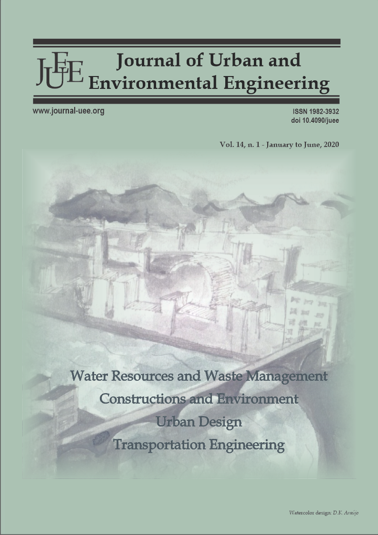COMPACT SEWAGE TREATMENT SYSTEMS FOR RURAL SANITATION
DOI:
https://doi.org/10.4090/juee.2020.v14n1.78-86Abstract
The combination of anaerobic pre-treatment and conventional aerobic technologies in a single compact unit has the potential to afford practical, sustainable and low-cost systems for the decentralized treatment of sewage. The aims of the present study were (i) to determine the efficiencies of a single-family compact (SFC) and a multi-family compact (MFC) station in removing organic matter from domestic sewage, and (ii) to investigate the behavior of aerobic intermittent sand filters (ISFs) regarding nitrification. The SFC station consisted of an upflow anaerobic sludge blanket reactor, an anaerobic upflow bed filter and an aerobic ISF, while the MFC station comprised a septic tank and two ISFs. The mean efficiencies for the removal of total chemical oxygen demand, total suspended solids and total Kjeldahl nitrogen were, respectively, 90, 93 and 75% for the SFC and 87, 91% and 74% for the MFC with ISFs operated at hydraulic loading rates of 380 L.m-2.day-1. The sand filters produced helminth-free effluents that complied with World Health Organization recommendations for water intended for agricultural reuse, although the geometric mean of E. coli counts (104 CFU.100 mL-1) was somewhat high, implying that the treated water was appropriate for irrigation in low-tech agriculture.Downloads
Download data is not yet available.
Downloads
Published
2020-06-07
Issue
Section
Articles




